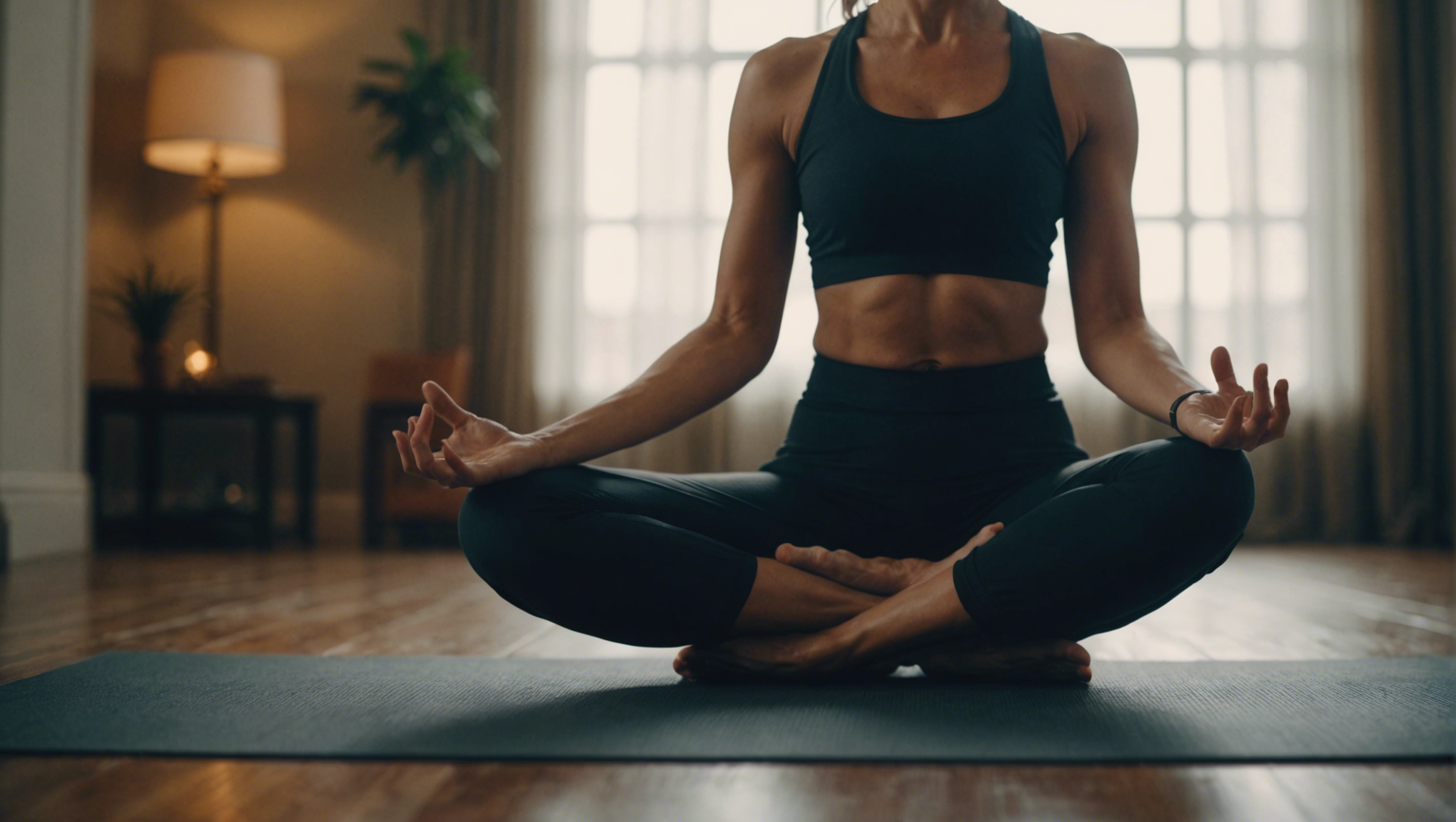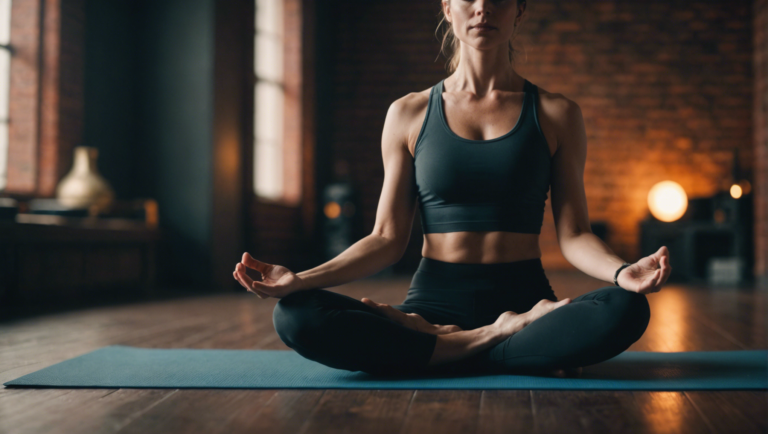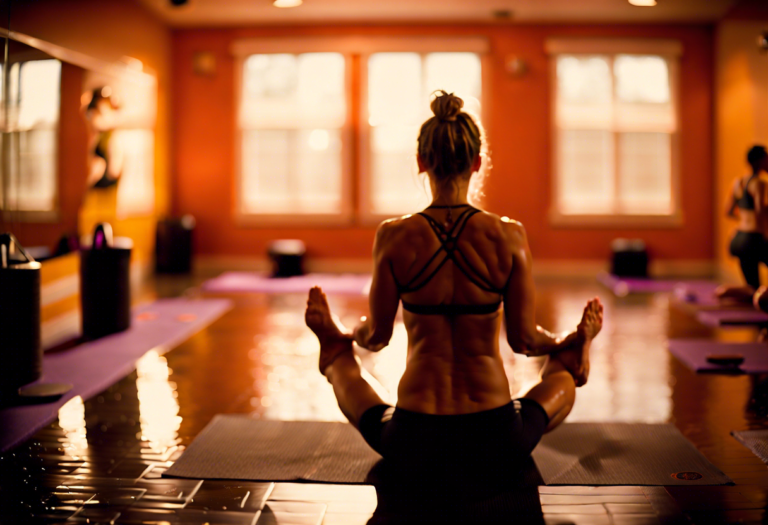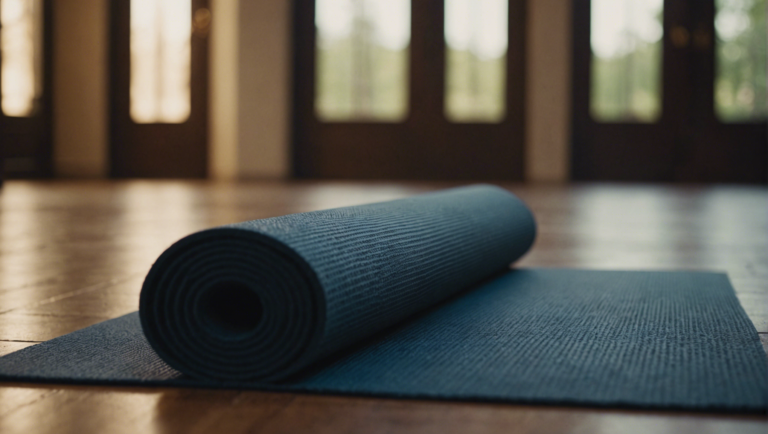Exploring Static Yoga: The Art Of Holding Poses
The Essence and Benefits of Static Yoga: Delving into the Art of Holding Poses
Yoga, an ancient practice with its roots deeply embedded in the philosophy of bringing harmony between body and mind, has evolved over centuries into various forms, each offering unique benefits to its practitioners. Among these practices, Static Yoga stands out as a distinctive approach that emphasizes the significance of holding poses for extended periods. This practice, focusing on stillness and stability, offers a multitude of physical, mental, and spiritual benefits, diving deep into the essence of what it means to truly connect with oneself.
Unveiling the Core of Static Yoga
Static Yoga, often perceived simply as holding yoga poses without movement, is much more than meets the eye. It is an intricate blend of controlled breathing, focused attention, and physical steadiness. This practice encourages individuals to maintain asanas (poses) for longer durations, which can range from a few breaths to several minutes, depending on the practitioner’s level of experience and the specific pose being performed.
The essence of Static Yoga lies in its ability to foster a deep sense of introspection and mindfulness. By eliminating movement, the practitioner can concentrate on each muscle and fiber of their being, experiencing the pose in its entirety. This prolonged engagement not only enhances physical endurance and flexibility but also cultivates a meditative state, allowing for a profound connection between the mind, body, and spirit.
Physical Benefits: Beyond Flexibility and Strength
While Static Yoga is renowned for its capability to improve flexibility and build muscular strength, its benefits extend far beyond these aspects. Holding poses for extended periods places a consistent, gentle stress on the muscles, tendons, and ligaments, thereby increasing circulation and improving overall tissue health. This can lead to enhanced joint mobility and a reduction in the risk of injuries, making it an ideal practice for individuals of all ages and fitness levels.
Additionally, Static Yoga can contribute to improved posture and body alignment. Through regular practice, individuals can develop a greater awareness of their body’s position in space, which can naturally correct postural imbalances and alleviate discomfort associated with chronic conditions, such as lower back pain.
Mental and Emotional Harmony through Steadiness
One of the most transformative aspects of Static Yoga is its impact on mental and emotional well-being. The act of maintaining a pose, focusing on breath and bodily sensations, can serve as a powerful tool for cultivating mindfulness and reducing stress. This practice encourages practitioners to stay present, observing their thoughts and emotions without judgment, which can lead to a more peaceful and balanced state of mind.
Moreover, the discipline and patience required to hold poses can translate into increased mental resilience and emotional stability. Practitioners often report a heightened sense of inner peace and decreased anxiety levels, attributing these improvements to the meditative quality of Static Yoga.
Spiritual Growth through Dedication and Awareness
For those on a spiritual quest, Static Yoga offers a pathway to deeper self-awareness and spiritual awakening. By fostering a quiet, introspective state, it allows practitioners to explore the deeper layers of their consciousness and connect with their inner selves. This can lead to revelations about one’s life purpose, values, and aspirations, facilitating personal growth and transformation.
Furthermore, the practice of Static Yoga embodies the principle of non-attachment. As practitioners learn to release their expectations and accept each moment as it is, they cultivate a sense of equanimity and detachment from the material world, which is a cornerstone of many spiritual traditions.
Embracing the Journey with Static Yoga
Embarking on a journey with Static Yoga requires patience, persistence, and an open heart. While the practice may initially pose challenges, such as physical discomfort or mental restlessness, these obstacles diminish with time as one develops greater endurance, focus, and self-compassion.
For individuals seeking a holistic approach to well-being, encompassing physical health, mental clarity, emotional resilience, and spiritual depth, Static Yoga offers a comprehensive path. By embracing the art of holding poses, practitioners can unlock the door to a richer, more fulfilled existence, grounded in the present moment and connected to the essence of who they truly are.
Static Yoga vs. Dynamic Yoga: Understanding the Differences and Complementary Nature
Yoga, an ancient practice rooted in over 5,000 years of Indian philosophy, offers a diversified approach to enhancing physical, mental, and spiritual well-being. Among its various styles, Static Yoga and Dynamic Yoga stand out as distinct pathways, each offering unique benefits and experiences to practitioners. Understanding the differences and complementary nature of these forms can enhance one’s yoga practice, catering to individual needs and preferences.
The Essence of Static Yoga
Static Yoga, also known as Hatha Yoga in traditional terms, emphasizes holding poses (asanas) for extended periods, typically ranging from a few breaths to several minutes. This practice focuses on mastering the art of stillness, both physically and mentally, enabling practitioners to delve deep into each pose. The primary goal is to achieve a state of meditative focus, where the mind attains tranquility through sustained physical effort and concentration.
Key benefits of Static Yoga include:
- Improved Flexibility and Posture: The prolonged holding of poses gently stretches the muscles, tendons, and ligaments, promoting flexibility and aiding in the correction of postural imbalances.
- Enhanced Mental Focus and Discipline: The practice demands considerable mental concentration, which can sharpen focus and foster a greater sense of inner discipline.
- Stress Reduction: By encouraging deep breathing and mindfulness, Static Yoga serves as an effective stress reliever, calming the mind and reducing symptoms of anxiety.
- Muscular Strength and Tone: Although the movements are slow and controlled, the need to maintain poses builds muscular strength, particularly in the core, legs, and arms.
The Dynamics of Dynamic Yoga
In contrast, Dynamic Yoga, often associated with Ashtanga, Vinyasa, and Power Yoga, champions a more vigorous approach. This style involves a continuous flow of movements, seamlessly transitioning from one pose to another with synchronized breathing. The fluidity and pace of the sequences vary, but all aim to cultivate a sense of rhythm and flow, energizing the body and mind.
The benefits of Dynamic Yoga are manifold:
- Cardiovascular Improvement: The constant movement increases heart rate, offering a cardiovascular workout that can improve heart health and stamina.
- Detoxification and Improved Digestion: The dynamic movement and sweat-inducing sequences can help flush toxins from the body and enhance digestive health.
- Weight Management: Given its active nature, Dynamic Yoga can aid in weight loss or maintenance, burning calories through continuous movement.
- Increased Energy and Vitality: The practice invigorates the body and stimulates the nervous system, leading to increased energy levels and a sense of rejuvenation.
Harmonizing Static and Dynamic Yoga
Rather than viewing Static and Dynamic Yoga as opposing forces, embracing both can offer a more holistic approach to yoga practice. Integrating static poses can deepen the physical aspect of yoga, allowing for greater muscular strength and flexibility. In contrast, incorporating dynamic sequences can elevate the practice, introducing cardiovascular benefits and promoting mental agility through the challenge of movement synchronization.
This harmonization caters to the body’s varying needs, balancing periods of intense activity with moments of stillness and recovery. Such a comprehensive approach can also prevent the plateau effect, where progress stalls due to monotony in practice, ensuring continual growth and development in one’s yoga journey.
Cultivating a Personalized Yoga Practice
Ultimately, the choice between Static and Dynamic Yoga—or a blend of both—should reflect one’s personal goals, physical capabilities, and temperamental inclinations. Engaging with both styles not only broadens one’s understanding and appreciation of yoga but also maximizes the benefits, leading to a more fulfilling and balanced practice. As with any holistic discipline, the journey of yoga is deeply personal, and honoring one’s needs and preferences is key to fostering a sustainable and enriching practice.
The Healing Power of Stillness: How Static Yoga Poses Enhance Mind-Body Connection
Static yoga, often overshadowed by its more dynamic counterparts, offers profound benefits deeply rooted in the stillness of its practice. By maintaining yoga poses for extended periods, practitioners embark on an introspective journey, fostering a unique mind-body connection that cultivates mental clarity, physical strength, and emotional resilience. This exploration into the essence of static yoga reveals its therapeutic potential, transforming the way we perceive stillness in a constantly moving world.
The Art of Holding Poses: A Path to Inner Peace
Static yoga poses, or asanas, serve as the foundation for a meditative practice that transcends physical boundaries, reaching into the depths of mental and emotional wellbeing. Holding poses ranging from a few breaths to several minutes allows practitioners to cultivate patience, endurance, and a deep sense of presence. This deliberate slowing down counters the fast-paced rhythm of contemporary life, offering a sanctuary of tranquility amidst chaos.
Physical Benefits: Beyond Flexibility and Strength
While the physical benefits of yoga, such as improved flexibility and strength, are well-documented, static yoga brings unique advantages to the table. By maintaining a pose, the body has the opportunity to break down barriers in a way that dynamic movements cannot achieve. Muscles, tendons, and ligaments are gently stretched and strengthened, enhancing joint mobility and reducing the risk of injury. Additionally, the focused effort required to hold a pose stimulates blood circulation and detoxification, promoting overall health.
Psychological and Emotional Healing: The Power of Presence
The static nature of these poses offers a profound psychological and emotional cleanse. The practice becomes a form of moving meditation, where the singular focus on the present moment quiets the mind and alleviates stress. The discipline of stillness enhances mental clarity and concentration, offering therapeutic effects for those battling anxiety and depression. Moreover, the vulnerability of holding a pose exposes underlying emotional tensions, providing an opportunity for release and healing.
Enhancing Mind-Body Connection: A Dialogue Without Words
At its core, static yoga fosters an intimate conversation between mind and body, a dialogue facilitated without words. This connection is nurtured through heightened body awareness; as practitioners focus inward, they become attuned to the subtleties of bodily sensations — tension, discomfort, release, and relaxation. This attentiveness strengthens intuition and self-understanding, guiding individuals toward holistic wellbeing.
Breath as the Bridge: The Role of Pranayama
Breathwork, or Pranayama, plays a crucial role in the practice of static yoga. The breath becomes a bridge between the physical and mental, guiding the body through the challenge of maintaining poses. Controlled breathing techniques deepen the state of meditation, enhancing the calming effects on the nervous system and elevating the practice to a spiritual experience.
Building a Sustainable Practice: Slow and Steady Wins the Race
Embarking on a journey with static yoga requires patience and persistence. Beginners are encouraged to start slowly, respecting their body’s limitations and gradually increasing the duration of poses. A mindful approach ensures a sustainable practice, minimizing the risk of injury and promoting long-term engagement. Consistency is key; even a few minutes daily can yield significant benefits over time.
Static yoga, with its emphasis on stillness and presence, offers a counterbalance to the relentless pace of modern life. By integrating this practice into our daily routine, we unlock the healing power of stillness, fostering a profound mind-body connection that nurtures our physical, mental, and emotional health. As we explore the art of holding poses, we discover that true strength lies in vulnerability, and that within stillness, we find our deepest reserves of power and resilience.
Incorporating Static Yoga into Your Daily Routine: Practical Tips and Techniques
The daily bustle and constant engagement with digital devices have turned our lives into a never-ending stream of stimuli. The quest for balance and mindfulness brings many individuals to yoga, particularly the discipline of Static Yoga, which contrasts dynamically moving flows with profound stillness and sustained posture holding. The benefits of integrating Static Yoga into your everyday life stretch far beyond the physical realm, enriching mental calmness, emotional stability, and a deeper connection with the self.
Understanding Static Yoga: A Path to Inner Peace
Static Yoga, often characterized by the long-held, motionless poses, invites practitioners to dive into the quiet depths of their being. Unlike its more fluid counterparts, this practice focuses on maintaining positions for an extended period, which can range from a few breaths to several minutes. The technique not only enhances flexibility and strength but also cultivates patience and endurance, teaching the body and mind to exist in harmony despite discomfort or challenge.
Crafting Your Personal Static Yoga Journey
Embarking on a Static Yoga regimen doesn’t require large swathes of time or a dedicated studio space. It begins with weaving simple poses into the fabric of your daily activities. Here are practical tips to seamlessly blend Static Yoga into your routine, fostering a holistic well-being transformation.
Start Small with Morning Mindfulness
Begin your day by dedicating a few minutes each morning to Static Yoga, setting a peaceful tone for the hours ahead. Poses like the Mountain Pose (Tadasana) or the Child’s Pose (Balasana) can be perfect starting points, allowing you to connect with your breath and center your thoughts before the day unfolds.
Integrate Poses into Work Breaks
Long hours at a desk can lead to stiffness and stress. Utilize short breaks to practice Standing Forward Bend (Uttanasana) or a seated Spinal Twist (Ardha Matsyendrasana). These can be done almost anywhere and offer the dual benefit of reinvigorating the body and clearing the mind, fostering both creativity and concentration.
Evening Unwind with Gentle Stretching
As the day winds down, transition into calmer activities with a Static Yoga sequence. Gentle poses like the Legs-Up-the-Wall Pose (Viparita Karani) or the Sphinx Pose (Salamba Bhujangasana) can help in releasing the day’s tensions and preparing the body for a restful night’s sleep.
Build a Supportive Community
Journeying with others who share your interests can greatly enhance motivation and provide valuable insights. Joining online forums, participating in local classes, or simply sharing your practice with friends and family can create a supportive environment that encourages persistence and exploration.
Customize Your Practice
Static Yoga is highly adaptable, making it suitable for individuals of all fitness levels and lifestyles. Experiment with different poses and holding durations to find what works best for you. Listen to your body’s cues and remember that Static Yoga is a personal practice aimed at inner awareness and growth, not external performance.
The transformative power of Static Yoga lies in its simplicity and accessibility. By employing these practical tips to embed Static Yoga into the daily routine, individuals can unlock a myriad of benefits. Improved physical health, heightened mental clarity, emotional resilience, and an enriched spiritual connection become milestones on this journey towards a balanced and mindful lifestyle. As you continue to explore and deepen your practice, remember that every pose, every breath, and every moment of stillness is a step closer to the harmonious alignment of body, mind, and spirit.
Mastering the Balance: Overcoming the Challenges of Static Yoga Poses
Mastering Static Yoga Poses
Static yoga, the practice of holding yoga poses for prolonged periods, challenges both the body and mind, demanding concentration, strength, and flexibility. Unlike dynamic yoga styles that focus on movement between poses, static yoga emphasizes stillness, providing a unique set of challenges for practitioners. This deep dive explores strategies to overcome these challenges, enhancing your yoga practice.
The Art of Patience and Focus
Embracing Stillness for Inner Peace
Mastering static yoga poses necessitates a profound sense of patience. The initial impulse may be to move or adjust constantly, but the essence of static yoga lies in cultivating stillness. As you embark on this journey, focusing on your breath becomes crucial. Deep, controlled breathing not only steadies the mind but also facilitates muscular relaxation, allowing you to maintain poses longer. This intense focus draws you into a meditative state, transforming your practice into a moving meditation.
Overcoming Physical Challenges
The physical demands of maintaining a pose without movement can be taxing. Frequently, the challenge is not just muscular strength but also the endurance to hold a pose. To overcome this, start with shorter durations, gradually increasing them as your body adapts. Incorporate strength-training exercises outside of your yoga practice to build the necessary muscle power. Flexibility also plays a significant role; regular stretching and mobility work can enhance your range of motion, making challenging poses more accessible.
Building a Solid Foundation
Prioritizing Alignment and Support
Alignment is the cornerstone of a productive static yoga practice. Proper alignment not only ensures safety but also maximizes the benefits of each pose. Utilize props like blocks, straps, and bolsters to support your body, allowing you to hold poses longer without strain. Listening to your body is key; if you feel pain or discomfort, adjust your alignment or use additional support.
Gradual Progression in Pose Difficulty
Rushing into complex poses without mastering the basics is a common pitfall. Begin with simpler poses to build a solid foundation in your practice. As you gain strength and flexibility, gradually introduce more challenging poses. This incremental approach reduces the risk of injury and builds confidence in your ability to maintain static positions.
The Mental Game
Cultivating Mindfulness and Resilience
The mental component of static yoga is as significant as the physical. Holding a pose provides the opportunity to observe your mind’s tendencies, noticing any impatience or frustration that arises. This awareness is the first step in cultivating a more mindful, resilient approach to challenges, both on the mat and in daily life. Practice accepting discomfort as a path to growth, using it to foster mental toughness and patience.
Leveraging Visualization and Positive Affirmations
Visualization and positive affirmations can be potent tools in mastering static poses. Visualize yourself successfully holding a pose, focusing on the feelings of strength and stability this elicits. Combine this with positive affirmations, repeating phrases like "I am strong, I am stable" to build self-belief and resilience.
Integrating Static Yoga into Your Routine
To truly benefit from static yoga, consistency is key. Integrating static poses into your daily routine, even if only for a few minutes at a time, can significantly enhance your practice. Consider setting specific goals, such as increasing hold times or mastering a particular pose, to maintain motivation and track progress.
Static yoga poses present a unique set of challenges that require patience, focus, and gradual progression. By embracing these strategies, you can overcome obstacles, enhancing both your physical and mental resilience. The journey of mastering static yoga is not just about physical achievement but also about discovering inner strength and tranquility.
Conclusion
Embarking on a journey through the realms of static yoga reveals an enriching landscape where the art of holding poses acts as a bridge to deeper self-awareness and physical well-being. This exploration illuminates the essence and benefits of static yoga, distinguishing it from its dynamic counterpart while highlighting the symbiotic relationship they share. Through this journey, we uncover the profound healing power of stillness that enhances the mind-body connection, offering a sanctuary of peace and recuperation in our fast-paced world. By incorporating static yoga into our daily routines, we navigate the practical pathways to infuse our lives with its transformative qualities, embracing the balance and discipline required to master its challenges.
The nuances of static yoga, as it stands in contrast to dynamic yoga, are not just in the method but in the mindset and outcomes they foster. While dynamic yoga emphasizes movement, flow, and the transition between poses, static yoga invites us to pause, to dwell deeply in each posture, fostering an introspective ambiance that nurtures patience, resilience, and persistence. This stillness is not a mere absence of motion but is teeming with inner activity, as each breath guides us closer to a harmonious alignment of body, mind, and spirit. It’s here, in the quietude of static poses, that we cultivate strength, flexibility, and an unparalleled sense of centeredness that radiates into every facet of our lives.
Furthermore, the healing power of stillness in static yoga goes beyond the physical benefits, offering a therapeutic respite for the mind. In our constant search for external solutions to internal unrest, static yoga serves as a poignant reminder that sometimes, the answers lie in being still. By holding poses, we are compelled to confront our thoughts, emotions, and the habitual patterns that shape our responses to the world around us. This introspective practice fosters a deeply rooted sense of mindfulness, reducing stress and enhancing mental clarity, ultimately contributing to emotional equilibrium and holistic well-being.
The practical integration of static yoga into everyday life may seem daunting at first glance, yet it unveils itself to be remarkably achievable and profoundly rewarding. It encourages a seamless blend of discipline and self-compassion, urging us to find moments of stillness amidst chaos and to listen to our bodies with unwavering respect and understanding. The tips and techniques shared for weaving static yoga into our daily routines serve as a testament to its accessibility and adaptability, reinforcing that the pursuit of balance and mindfulness is not confined to the yoga mat but extends into every moment of our existence.
Yet, mastering the balance within static yoga poses presents its own set of challenges, mirrored in the vulnerabilities and limitations we encounter within ourselves. This facet of the practice is not a deterrent but a catalyst for growth, urging us to lean into discomfort, to embrace the lessons ensconced in each struggle, and to emerge stronger, more flexible, and profoundly connected with our inner selves. Overcoming these challenges is not just about achieving physical poise but about embodying the equilibrium and tranquility that static yoga instills, radiating its serene strength outward into our lives and interactions.
Through the lens of static yoga, we are invited to delve into a practice that transcends physical boundaries, embarking on an inward odyssey that illuminates the intricate tapestry of our being. This exploration fosters an unwavering anchor in the present moment, a sanctuary of stillness amidst the torrents of life. The lessons learned, the patience honed, and the balance achieved through the art of holding poses enriches us, offering a salve for the body and balm for the soul. As we integrate these principles into our lives, we not only enhance our physical flexibility and strength but cultivate a resilience, a clarity of mind, and a tranquility of spirit that fortifies us against the vicissitudes of life. Thus, the journey through static yoga is not merely one of physical endeavor but a profound voyage towards inner harmony and holistic health, a testament to the power of stillness in fostering a deeply connected and balanced life.



